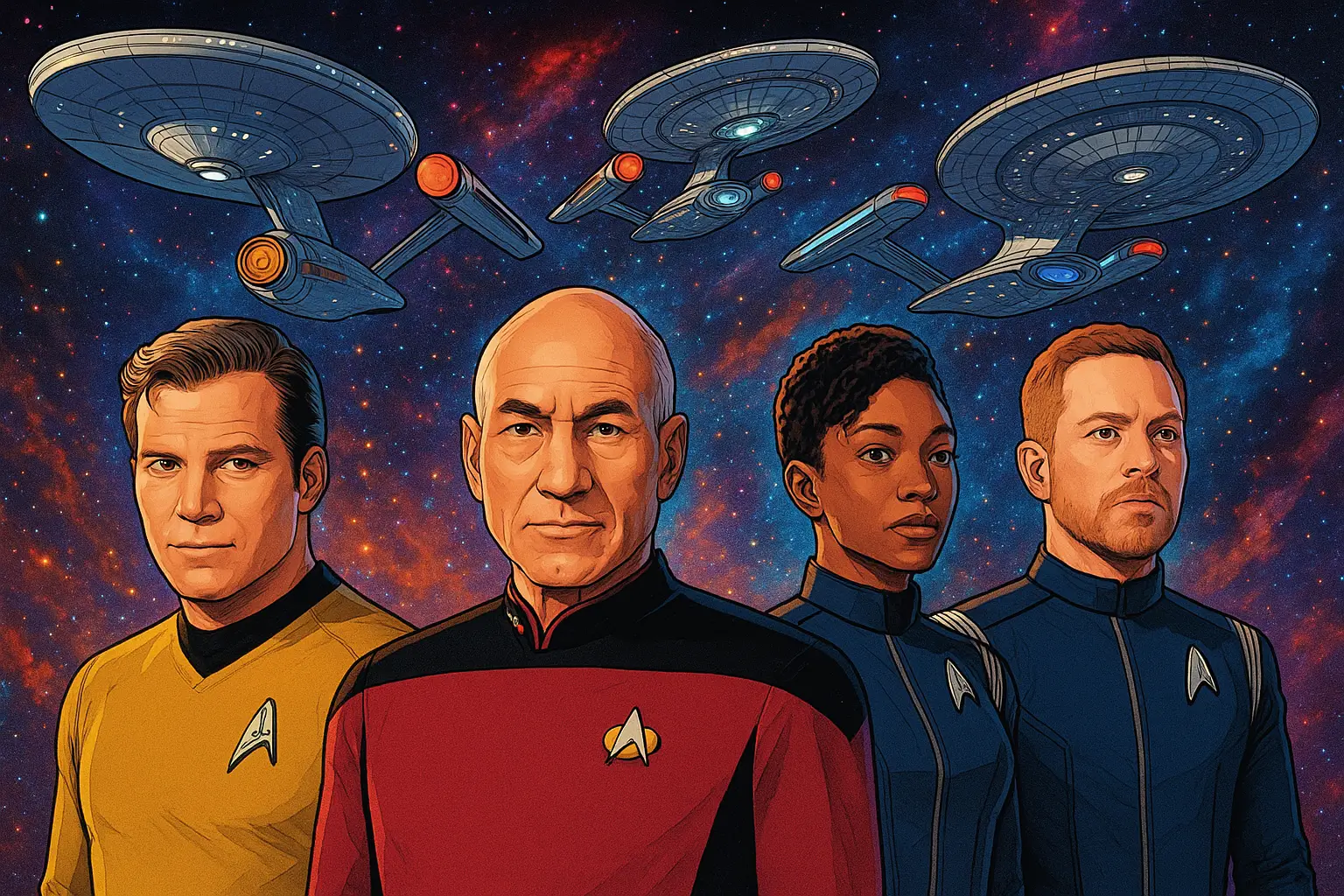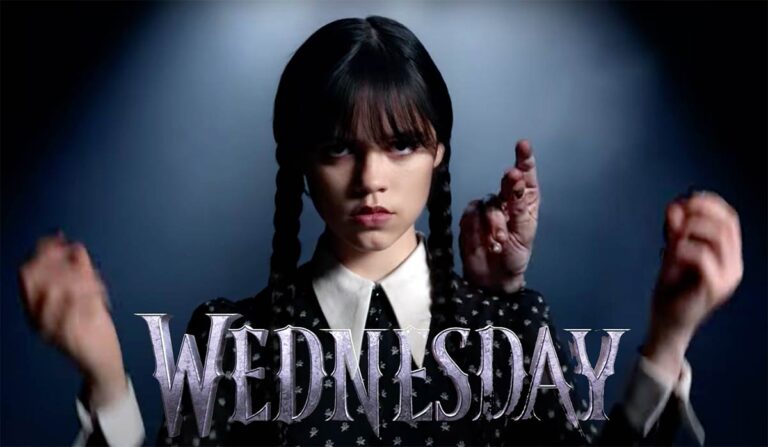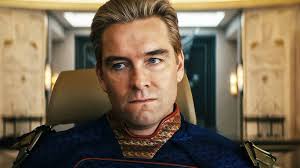So, you want to dive into the Star Trek universe? Maybe you’ve seen a meme, or heard your nerdy cousin quote “Resistance is futile” at Thanksgiving. Or you caught a trailer for Strange New Worlds and wondered whether you needed to binge fifty years of television first. Take a breath. This guide warps you past confusion, beams down some facts, and helps you boldly go, whether you’re a rookie or eyeing a deep rewatch.
The Galaxy-Sized Legacy: Why Star Trek Still Buzzes
Star Trek is basically the great-grandparent of all modern sci-fi. It’s older than the moon landing, and yet it keeps dropping new episodes and spawning debates on TikTok. That’s staying power. But why does it still matter?
First, there’s representation. Since the sixties, Star Trek put women and people of color on the bridge — not in the background. Nichelle Nichols as Uhura basically inspired a generation, and Dr. Martin Luther King Jr. personally persuaded her to stay on the show because she meant that much for Black representation on television (source: Time Magazine, 2023).
Second, Trek’s wild, optimistic tech filled our world with actual new gadgets! Cell phones? Inspired by Kirk’s communicator, according to Martin Cooper, the guy who invented them (Smithsonian Air & Space, 2024). Modern sleek tablet UI? Many credit Star Trek’s iconic LCARS system (take that, cluttered file folders).
Lastly, Star Trek’s universe radiates hope — even when the galaxy gets sticky. Roddenberry’s pitch: humanity’s problems are real, but we grow past them. This vision anchors even the newest shows like Strange New Worlds, which Paramount+ renewed for a fourth season in May 2025. Cynical? Not here. Trek insists we can learn, cooperate, and surprise ourselves.
Your Warp Guide: What Trek Shows Go Where?
Let’s cut through the nebula of confusion. The Star Trek franchise sprawls across timelines, styles, and streaming platforms. Here’s how the core TV shows line up in-universe — because yes, there’s an “actual” timeline.
Star Trek: Enterprise (2001 — 2005, set 2151 — 2161)
Jump here for Starfleet’s awkward, historic first steps. Expect Vulcans with attitude, the Xindi attack, and the delicate beginning of the United Federation of Planets.
Star Trek: Discovery (2017 — 2024, starts 2256 — 58, then vaults to 3189 — 91)
This one throws a spore-powered starship across centuries. It started as a prequel, then delivered a wild, fresh leap into the 32nd century. Discovery wrapped its fifth and final season in April 2024, so you can binge with no anxiety about cliffhangers.
Star Trek: Strange New Worlds (2022 — present, set in the 2250s)
Fan-favorite prequel with Captain Pike, Spock, and Number One aboard the Enterprise before Kirk takes command. The third season dropped in June 2025 and keeps the audience hyped by serving up old-school, one-adventure-per-week vibes.
Star Trek: The Original Series (1966 — 69, set 2265 — 69)
This is the classic. Captain Kirk, Spock, and Dr. McCoy navigate foam boulders, wild fashion, and philosophical brain teasers. It set the rules and broke them — often in the same hour.
Star Trek: The Animated Series (1973 — 74, set 2269 — 70)
Animated, canon, and wonderfully weird. It gave us a three-armed helmsman (Arex), holodeck prototypes, and stories that challenged the live-action budget.
The Kelvin Timeline (Films) (2009 — 2016, alt-verse)
J.J. Abrams zipped us into an alternate universe starting with the 2009 movie. It’s fun, flashy, and totally jump-in-able, but not required viewing for TV. Skip for now unless you crave more Chris Pine.
Star Trek: The Next Generation (1987 — 94, set 2364 — 70)
Jean-Luc Picard’s crew deals with existential androids, time loops, and alien morality. Steeped in philosophy, diplomacy, and the occasional bar brawl — with a holodeck twist, of course.
Star Trek: Deep Space Nine (1993 — 99, set 2369 — 75)
The only Trek show set mainly on a space station. Things get messy: religious politics, spy games with shape-shifters, and an epic Dominion War arc. This show’s blend of serialization and character deep-dives earned it a reputation for complexity years before “peak TV.”
Star Trek: Voyager (1995 — 2001, set 2371 — 78)
Janeway’s Voyager gets shot to the Delta Quadrant, 70-years away from home. Seven seasons later, they make it back. Think lost-in-space survival, amazing guest aliens, and the birth of “coffee, black” as a command.
Star Trek: Picard (2020 — 23, set 2399 — 2401)
Elderly Picard refuses to sit out retirement. Expect new synth politics, old friends (yes, Riker and Data show up), and bold narrative risks. It’s a late-life coda for a legend, and it’s earned its place.
The Animated Arrivals
Two recent series play for laughs or younger fans — though both are surprisingly smart about canon.
Star Trek: Lower Decks (2020 — present, set 2380 — 84)
The USS Cerritos hosts the “other guys.” No yellow-shirt heroics here — this is ensigns fixing replicators, geeking out about classic captains, and landing in one comics-worthy disaster after another. Season five beams in September 2025.
Star Trek: Prodigy (2021 — present, set 2383+)
Here’s the “gateway Trek” for family viewing. A pack of young aliens nicks a Starfleet ship and gets schooled by a Janeway hologram — so you get high-energy adventure and just enough Starfleet ethics. Season two dropped on Netflix in January 2025, with season three already in production.
Knotted and Unknotted: How the Series Connect
Trek weaves itself together in ways both obvious and sneaky. With more than sixty years of storylines, there’s something for everyone, no matter your favorite flavor of sci-fi.
- Enterprise sets up the founding ideals we see pay off in TOS and Discovery.
- Discovery acts as both prequel and future sequel, blending references from almost every other series as it whips through time.
- Strange New Worlds exists because Discovery resurrected Pike and Spock, making them fan favorites again.
- The Next Generation, Deep Space Nine, and Voyager all operate at the same time, handing off storylines and crossover characters on the regular. DS9 and Voyager spin directly out of TNG’s successes, and characters like O’Brien, Worf, and even Q cross between all three.
- Lower Decks and Prodigy love deep-cut Easter eggs — Starfleet legends like Riker, Tom Paris, and Janeway show up to guide (or mildly confuse) the new recruits.
Even old faces from the classic shows pop up — sometimes as legends, sometimes as holodeck memories, and sometimes as actual plot drivers (looking at you, Picard Season 3 reunion episode).
Three Star Trek Viewing Paths for Beginners
Now that you’ve got the lay of the land, let’s plot your course. Which Trek suits your style? Here are three ways to engage those warp engines and go.
1. The Classic Core Path
Jump in where the legends did:
- TOS (feel free to jump to best-of lists)
- The Next Generation
- Key DS9 crossover episodes (“Birthright” and “Firstborn”)
- Voyager’s two-part pilot
- Star Trek: First Contact (movie)
- Picard (all three seasons)
You get all the emblematic captains and signature Trekkie moments, but miss out on some weird corners (which you can always circle back to later).
2. The Modern Quick-Start
Short on time or allergic to 1960s wigs?
- Strange New Worlds (start with Season 1 — it’s modern, but with retro flavor)
- Lower Decks Season 1 for the laughs and references
- Cherry-picked TOS essentials (“Balance of Terror” is still electric)
- Discovery Seasons 1 — 2
- And then keep going with new Strange New Worlds drops as they hit
This route feels fresh, looks gorgeous, and lets you backfill wherever you get curious.
3. The Chronological Marathon
For the completist who wants to savor every bit of Trek lore (and maybe win at trivia nights):
- Enterprise
- Discovery Seasons 1 — 2
- Strange New Worlds
- The Original Series and Animated Series
- Next, Voyager, DS9, and Lower Decks (in parallel)
- Prodigy
- Picard
- Discovery’s far-future seasons last
Yes, that’s over 800 hours of bold exploration. It’s worth it if you crave every callback.
Episodes that Define the Franchise
Don’t have 800 hours? Hit these gems:
- “The Measure of a Man” (TNG): On what makes a person, and why Data matters.
- “Far Beyond the Stars” (DS9): Mind-bending, meta, and deeply powerful on race in sci-fi.
- Strange New Worlds, pilot episode: Punchy, witty, and full of hope.
- “We’ll Always Have Tom Paris” (Lower Decks): An irreverent tour of Trek’s past and present.
Star Trek’s Social and Cultural Power
This universe isn’t just about phasers and boldly-going to new worlds — it’s about showing the world how to be better.
Here’s what’s happening offscreen:
- Trek’s convention circuit keeps swelling: 170 official Star Trek cons run worldwide in 2025 (source: ReedPOP).
- Trek lingo infiltrates real dictionaries—“captain’s log” officially entered the Oxford English Dictionary in 2024.
- Real scientists openly lift from Trek. NASA’s Exo-Miner project in 2025 uses Spock-style logic gating for data analysis (MIT Tech Review).
- On April 5 (First Contact Day), #StarTrekForAll trended with over 1.3 million posts in 2025 (Sprout Social).
The Trek Future: Continuing to Expand
Don’t worry about catching up to the bleeding edge. Trek always grows, always welcomes new fans. Here’s what’s ahead:
- The Section 31 streaming film starring Michelle Yeoh finished filming in July 2025 for a November 2026 release. Expect spy games, high stakes, and lots of Section 31 cloak-and-dagger business.
- Starfleet Academy, set in the 32nd century, starts filming late 2025. It promises rookie cadet drama — think hormones, homework, and holodecks gone haywire.
- Paramount+ hints at two fresh animated projects in the pipeline.
- Disney+ scooped up streaming rights to remastered TOS in select EU markets as of February 2025 (Deadline).
So, wherever you are — even if there’s just Wi-Fi and a mug of raktajino — Trek absolutely invites you aboard.
Set a Course and Engage
Look, the Trek universe sprawls, sparkles, and sometimes even stumbles. But it’s yours to discover. Choose a captain, pick an era, and leap in. Most importantly, remember: Star Trek isn’t a puzzle — you won’t break canon by jumping around. No matter the path, you’re heading for adventure, optimism, and a future shaped by curiosity. When you’re ready, just tell your streaming device, “Warp nine, engage!” And let the stars figure out the rest.





